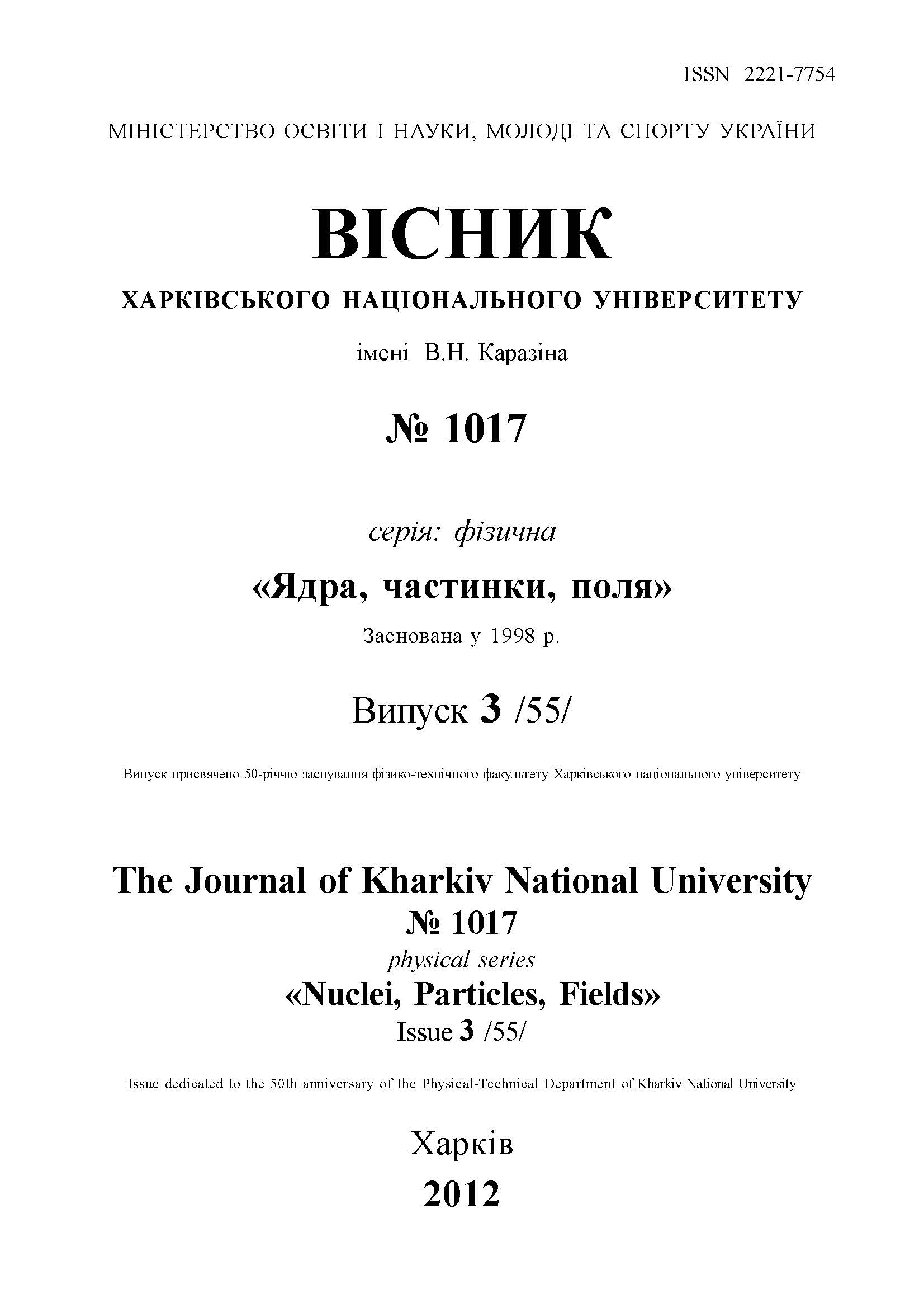Переробка твердих і рідких відходів та зменшення доз персоналу
Анотація
З метою мінімізації об’єму радіоактивних відходів на українських АЕС тверді відходи спалюють і пресують, а рідкі – випаровують. Це значно підвищує їхню питому активність і дозу опромінення в процесі переробки. У відповідності до принципу ALARA було запропоновано технологічні рішення, які зменшують дози персоналу. Перша черга комплексу, який споруджується на Запорізькій АЕС, складається з установок спалювання і пресування відходів. Хара ктеристики радіаційних полів при різних геометріях цих установок і ізотопному складі перероблюваних відходів були розраховані за допомогою програм PENELOPE і GEANT. Частину результатів було отримано за допомогою програмного забезпечення, розробленого авторами на основі методу точкових джерел. При операціях із пресованою золою спалених відходів товщину стін у приміщеннях, де експлуатується устаткування, було потрібно збільшити до 40 см бетону. Необхідна товщина стальних технологічних дверей у цих приміщеннях складає 12 см. Запропоновано альтернативний варіант конструкції технологічних дверей (близько 2 см сталі), який передбачає спеціальну захисну огорожу.
Завантаження
Посилання
Pismenetskiy S., Rudychev V., Rudychev Y., Tutunik O. Analysis of external radiation RW cylindrical volume // The Journal of Kharkiv National University, physical series “Nuclei, Particles, Fields. – 2008. –Vol. 808. - Issue. 2(38). - P.53-60.
Pismenetskiy S., Pyshkin V., Rudychev V., Rudychev Y. Spectral characteristics of VVER-1000 spent nuclear fuel which is intended for a dry storage keeping // The Journal of Kharkiv National University, physical series “Nuclei, Particles, Fields. – 2007. –Vol. 784. - Issue. 4(36). - P.109-114.
Lazurik V.T., Tabata T., Lazurik V.M. Database for Electron-Material Interactions // Rad. Phys. & Chem. – 2001. –Vol. 60. -P. 161-162.
Baro J., Sempau J., Salvat F., Fernandez-Varea J. PENELOPE: an algorithm for Monte Carlo simulation of the penetration and energy loss of electrons and positrons in matter // Nucl. Instr. & Meth. – 1995. - Vol. B100. - P.31-46.
JEF-2.2 Radioactive Decay Data, OECD Nuclear Energy Agency, JEF Report 13, 1994.
Nichols Assessment and evaluation of decay data for EAF – 1999/2000, UKNSF(99). - P.130.
MCNPTM – A General Monte Carlo N-Particle Transport Code, Los Alamos National Laboratory Report LA-12625-M, Version 4B, Ed. by J. Briesmeister. - Los Alamos, New Mexico, 1997. – 736 p.
Автори, які публікуються у цьому журналі, погоджуються з наступними умовами:
- Автори залишають за собою право на авторство своєї роботи та передають журналу право першої публікації цієї роботи на умовах ліцензії Creative Commons Attribution License, котра дозволяє іншим особам вільно розповсюджувати опубліковану роботу з обов'язковим посиланням на авторів оригінальної роботи та першу публікацію роботи у цьому журналі.
- Автори мають право укладати самостійні додаткові угоди щодо неексклюзивного розповсюдження роботи у тому вигляді, в якому вона була опублікована цим журналом (наприклад, розміщувати роботу в електронному сховищі установи або публікувати у складі монографії), за умови збереження посилання на першу публікацію роботи у цьому журналі.
- Політика журналу дозволяє і заохочує розміщення авторами в мережі Інтернет (наприклад, у сховищах установ або на особистих веб-сайтах) рукопису роботи, як до подання цього рукопису до редакції, так і під час його редакційного опрацювання, оскільки це сприяє виникненню продуктивної наукової дискусії та позитивно позначається на оперативності та динаміці цитування опублікованої роботи (див. The Effect of Open Access).








